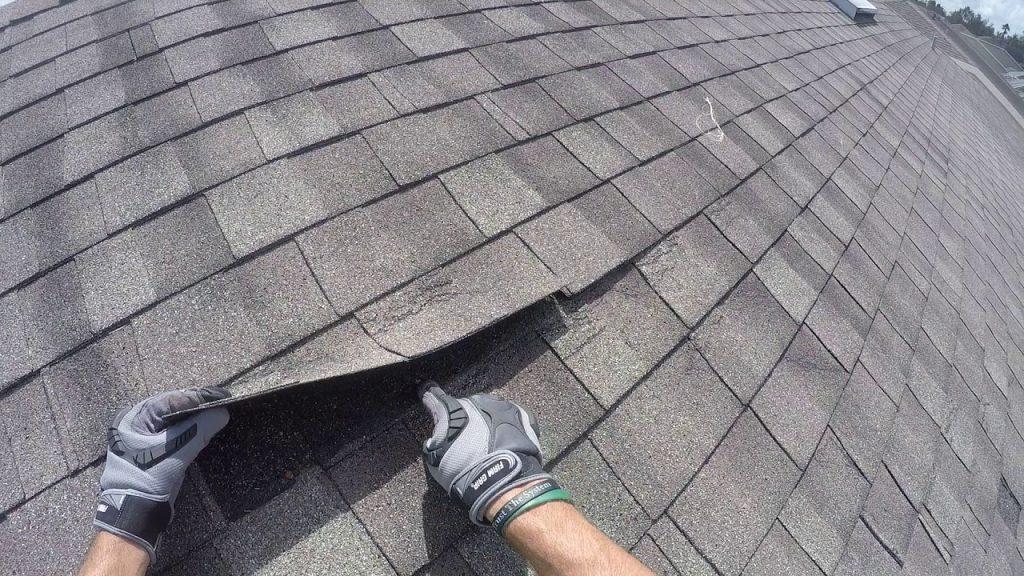Your roof is your first line of defense against the elements, but sometimes, even the sturdiest of roofs can succumb to the forces of nature. Wind is a powerful force, and it can cause significant damage to your roofing materials, particularly the shingles. In this article, we will explore the effects of wind on your roof shingles, how to identify wind damage, and what steps you should take to address it.

Understanding Wind Damage to Roof Shingles
The Power of Wind
Strong winds can exert incredible force on your roof. While your shingles are designed to withstand a certain level of wind, extreme gusts can put them to the test. Wind damage is more likely to occur in areas prone to severe weather, but it can happen almost anywhere.
Types of Wind Damage
Wind can cause various types of damage to your roof shingles, including:
- Lifting: High winds can lift the edges of your shingles, causing them to curl or detach. This leaves your roof vulnerable to leaks.
- Tearing: In some cases, the sheer force of the wind can tear shingles apart, leaving gaps in your roof’s protection.
- Granule Loss: Wind-driven debris can strip away the protective granules on your shingles, reducing their effectiveness and lifespan.
- Shingle Creasing: Intense wind pressure can crease or bend shingles, compromising their integrity.
Impact on Roof’s Lifespan
If left unaddressed, wind damage can significantly shorten the lifespan of your roof. Damaged shingles can lead to leaks, rot, and structural issues in your home. Prompt repairs are essential to prevent further problems.
Identifying Wind Damage
Exterior Inspection
Performing a visual inspection of your roof from the ground can help you identify potential wind damage. Look for:
- Missing Shingles: If you notice any shingles missing or scattered around your yard, it’s a clear sign of wind damage.
- Curling or Lifting: Check the edges of your shingles. If they are curling up or lifting, it’s a sign that the adhesive seal has been broken.
- Granule Loss: Look for areas of your roof where the granules are missing or appear worn. This indicates the protective layer of the shingle has been compromised.
Interior Inspection
In some cases, wind damage might not be immediately visible from the exterior. To ensure a thorough assessment, inspect your attic or crawl space for the following signs:
- Water Stains: Look for water stains or signs of moisture on the ceiling or walls. This could indicate that wind-damaged shingles have allowed water to infiltrate.
- Daylight: Check for any spots where daylight is visible through the roof. This indicates a gap or hole caused by wind damage.
Steps to Address Wind-Damaged Roof Shingles
1. Safety First
Before attempting any repairs, prioritize safety. If you’re not comfortable working on your roof or if it’s steeply pitched, it’s best to hire a professional roofer.
2. Temporary Fixes
If you discover missing or damaged shingles, you can apply a temporary fix by using roofing cement or adhesive to reattach them. This will help prevent immediate leaks.
3. Permanent Repairs
For a more permanent solution, replace the damaged shingles. Match the new shingles as closely as possible to your existing ones in terms of color, style, and material.
4. Full Roof Inspection
It’s advisable to conduct a full roof inspection to ensure there are no hidden issues. This is best done by a professional roofer who can assess the extent of the damage and recommend appropriate repairs.
Conclusion
Wind-damaged roof shingles are a common issue that homeowners face, especially in areas prone to severe weather. Timely detection and repair are crucial to prevent further damage to your roof and home. Regular roof maintenance, including inspections after storms or high winds, can help you identify wind damage early and protect your investment in your home’s roof. Remember that safety should always be a top priority, and when in doubt, seek professional assistance to address wind damage to your roof shingles.



Leave a Reply